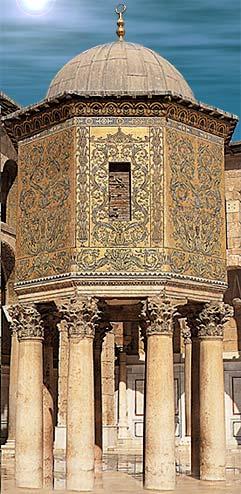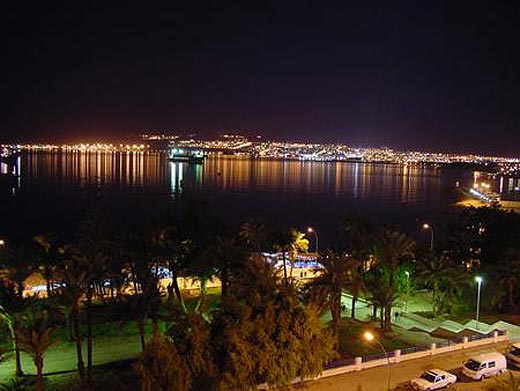 |
|
||||||||||||||||||||||||||||||||||||||||||||||||||||||||||
|
||||||||||||||||||||||||||||||||||||||||||||||||||||||||||
Syria has always been a center where East and West meet with their varied civilization. It is no wonder that Syria is the cradle of civilization, which flourished throughout history. Monuments, the most important archaeological sites, impregnable castles, citadels and dead cities narrate the glorious history of ancient nations. The basaltic and the limestone ruins tell about a marvelous architectural art. The Corinthian columns, the khans spread all over the Silk Road, the castles still towering from the Medieval ages, the mosques and palaces are the witnesses of a great rich history. To know Syria is to have knowledge of a legendary world
|
||||||||||||||||||||||||||||||||||||||||||||||||||||||||||
| |
||||||||||||||||||||||||||||||||||||||||||||||||||||||||||
TURKEY
|
||||||||||||||||||||||||||||||||||||||||||||||||||||||||||
| S Y R I A | ||||||||||||||||||||||||||||||||||||||||||||||||||||||||||
TURKEY Day 2 April 13 , 2011 Wednesday SYRIA Halep ( Aleppo), Syria 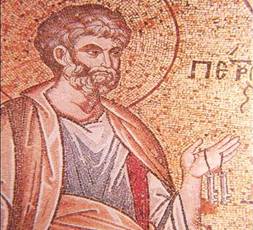 Transfer to the air port in Istanbul. Fly to Antakya. Transfer to the Syrian border drive 30 miles south to the Turkish - Syrian border. US citizens and Canadians need visa please click here see info . After border crossing which can take an hour or so we will drive south to Halep ( Aleppo). The first wonderful surprise will be the Gate of Havva and the Roman road which lead the troops of the many and merchants to Anatolia through out the history since the time of the Romans.St Simon Monastery This citadel is 60 km north-west of Aleppo. It was named after the hermit Saint Simon (Sam'an), a shepherd from northern Syria, who became a monk after a revelation in a dream. Following Saint Simon's death in 459, the Emperor Zenon ordered that a cathedral be built where the saint used to pray. Transfer to the air port in Istanbul. Fly to Antakya. Transfer to the Syrian border drive 30 miles south to the Turkish - Syrian border. US citizens and Canadians need visa please click here see info . After border crossing which can take an hour or so we will drive south to Halep ( Aleppo). The first wonderful surprise will be the Gate of Havva and the Roman road which lead the troops of the many and merchants to Anatolia through out the history since the time of the Romans.St Simon Monastery This citadel is 60 km north-west of Aleppo. It was named after the hermit Saint Simon (Sam'an), a shepherd from northern Syria, who became a monk after a revelation in a dream. Following Saint Simon's death in 459, the Emperor Zenon ordered that a cathedral be built where the saint used to pray. The layout was original, centering on the famous column from which Saint Simon used to preach. Four basilicas, arranged in the shape of a cross, opened into an octagon covered by a dome, in the center of which stood the holy column. It is a beautiful church built on the ridge of the hill where Saint Simon had taken up "residence". Simplicity and harmony combine to make the ruins of the Basilica of St. Simon (an earthquake destroyed parts of the church less than half a century after it had been built) a masterpiece of pre-Islamic art in Syria. 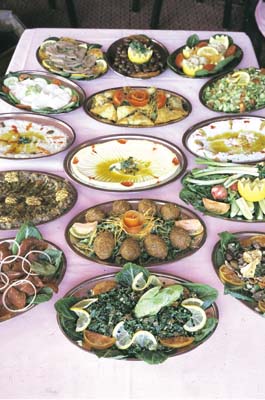 When we arrive in Aleppo, which will be late afternoon, we will immediately When we arrive in Aleppo, which will be late afternoon, we will immediately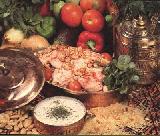 experience the great food of Syria at a very typical Restaurant built in an old city in the old part of Aleppo. The Syrian cuisine is varied and rich, in view of the fertility of Syrian lands and the abundance of their crops which enable the cook to be a master and to diversify in his choice and talent in the preparation of fresh meals made of vegetables, legumes and meats. The Syrian table is always decorated with the various delicious pastries famous all over the world. We will have our first experienceof the Syrian food at lunch in Halep. This afternoon we will visit Aleppo the second capital of Syria (350 km north of Damascus), and one of the oldest continuously inhabited cities in history. Old schools, churches, mosques, baths and ancient houses, some dating back to the 15th century, like the al-Bunduqiah (Venetian) Consulate, which contains superb ornaments and antiquities. experience the great food of Syria at a very typical Restaurant built in an old city in the old part of Aleppo. The Syrian cuisine is varied and rich, in view of the fertility of Syrian lands and the abundance of their crops which enable the cook to be a master and to diversify in his choice and talent in the preparation of fresh meals made of vegetables, legumes and meats. The Syrian table is always decorated with the various delicious pastries famous all over the world. We will have our first experienceof the Syrian food at lunch in Halep. This afternoon we will visit Aleppo the second capital of Syria (350 km north of Damascus), and one of the oldest continuously inhabited cities in history. Old schools, churches, mosques, baths and ancient houses, some dating back to the 15th century, like the al-Bunduqiah (Venetian) Consulate, which contains superb ornaments and antiquities. After our city site seeing we will enjoy home made food at the historic house where we will stay for 2 nights |
||||||||||||||||||||||||||||||||||||||||||||||||||||||||||
SYRIA Day 3 April 14 , 2011 Thursday Halep ( Aleppo), Syria
|
||||||||||||||||||||||||||||||||||||||||||||||||||||||||||
Hama is considered as one of the oldest inhabited areas in the Arab World. Located in the central region of Syria 120 km from the Mediterranean Sea, the area combines a spectacular mixture of steppe, mountains and river plains. The area is dominated by the Al-Aassi river, known internationally as the Orontes river.The climate is Mediterranean, : warm autumns, mild winters, warm springs and hot summers, eased by strong breezes. |
||||||||||||||||||||||||||||||||||||||||||||||||||||||||||
|
||||||||||||||||||||||||||||||||||||||||||||||||||||||||||
Apamea is located on the right bank of the Orontes, about 55 km to the northwest of Hama. It overlooks the Ghaab plain. It was built by Saluqos Nikator, the first king of the Seleucids in Syria in 300 B.C. He named it after his wife, Afamia. The city flourished to an extent that its population numbered half a million. As an Eastern crossroads, it received many distinguished visitors: Cleopatra, Septimus Severus and the Emperor Caracalla. In the Christian era, Apamea became a center of philosophy and thought, especially of Monophostism. Most of the uncovered ruins in it date back to the Roman and Byzantine ages. It is distinguished for its high walls and the main thoroughfare surrounded by columns with twisted fluting. The street is about 2km long and 87m wide. The ruins of the Roman theatre, which have been frequently disturbed, are now a great mass of stone. Its colonnade is 145 m long. Erected in the 2nd century, it was destroyed in the 12th century by two violent earthquakes; some columns are still standing nevertheless. To the west of the city, stands the Mudiq citadel which once formed a defense line along the Orontes. Fierce battles with the Crusaders attempting to conquer it took place in the 12th century, and Nur al-Din finally surrendered it in 1149. The citadel has huge towers, overlooking the Ghaab plain. It also has a khan built by the Turks in the 16th century, and transformed into an archacological museum which houses Apamea's mosaics.To the south of Mudiq castle lies the citadel of Shaizar overlooking the Orontes. In the Middle Ages it could only be reached by a draw-bridge. The main tower of the citadel is square in shape and overlooks the defensive fortresses. Arabic inscriptions from the Mamluk periods appear over its entrance. The citadel was rebuilt by the Mamluks after it was destroyed by an earthquake in 1157. The Crusaders tried to occupy it several times, but in vain. |
||||||||||||||||||||||||||||||||||||||||||||||||||||||||||
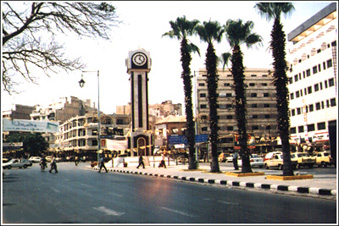 Overnight will be at Humus (Homs). This city is the third most important city in Syria. It lies 160 km to the north of Damascus. Like Petra and Palmyra, Homs was an Arab emirate in the 2nd century B.C. It was also the third station on the "Silk road" after Doura Europos and Palmyra. It still retains this position of importance today, as the oil pipelines pass through the city. The historical city produced many impressive personalities. Bassianos (an emir of Homs), through his daughter's marriage to the Roman emperor, Septimium Severus, who ruled Rome from 193 to 211, sired three rulers, Caracalla. Heliogabalus and Alexander Severus. The city was the birthplace of the famous Syrian philosopher, Longenius, counselor to Queen Zenobia, and of the famous physician, Marlian. Among the most significant historic constructions remaining in Homs is the mosque of Khaled ibn al-Walid, the great commander of the Muslim Arab armies. Two very tall white-stone minarets lend lightness to the imposing structure. The slender colonnade in black and white stone in horizontal rows is representative of traditional Syrian architecture.Many churches still stand in Homs from the days of early Christianity in Syria. One of these churches is said to possess the girdle of the Blessed Virgin. The church of St. Elian is unique for its collection of fine frescoes discovered in 1970. These bear inscriptions in Greek and Arabic, and date back to the end of the 12th century. The Nuri mosque also dates back to the 12th century, distinguished for its beautiful entrance. Overnight will be at Humus (Homs). This city is the third most important city in Syria. It lies 160 km to the north of Damascus. Like Petra and Palmyra, Homs was an Arab emirate in the 2nd century B.C. It was also the third station on the "Silk road" after Doura Europos and Palmyra. It still retains this position of importance today, as the oil pipelines pass through the city. The historical city produced many impressive personalities. Bassianos (an emir of Homs), through his daughter's marriage to the Roman emperor, Septimium Severus, who ruled Rome from 193 to 211, sired three rulers, Caracalla. Heliogabalus and Alexander Severus. The city was the birthplace of the famous Syrian philosopher, Longenius, counselor to Queen Zenobia, and of the famous physician, Marlian. Among the most significant historic constructions remaining in Homs is the mosque of Khaled ibn al-Walid, the great commander of the Muslim Arab armies. Two very tall white-stone minarets lend lightness to the imposing structure. The slender colonnade in black and white stone in horizontal rows is representative of traditional Syrian architecture.Many churches still stand in Homs from the days of early Christianity in Syria. One of these churches is said to possess the girdle of the Blessed Virgin. The church of St. Elian is unique for its collection of fine frescoes discovered in 1970. These bear inscriptions in Greek and Arabic, and date back to the end of the 12th century. The Nuri mosque also dates back to the 12th century, distinguished for its beautiful entrance. |
||||||||||||||||||||||||||||||||||||||||||||||||||||||||||
SYRIA Day 5 April 16 , 2011 Saturday Palmira Palmyra, is like a pearl in the heart of the desert, Palmyra, rising from the sands, is one of the most graceful and splendid ancient sites in the East, for the glory and the greatness are still evident and fully years after its construction by the Arab Queen Zenobia. It remains as one of most famous capitals of the ancient world. We will have a camel ride at sun set and wills end the evening in the oasis of Palmyra
Crusades Fortress Malula Mountain village where Aramaic is spoken Hike the canyon visit Tekla Monastery |
||||||||||||||||||||||||||||||||||||||||||||||||||||||||||
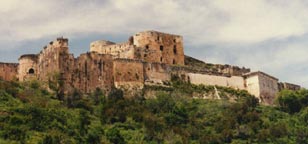 We will be following the path of the Crusades and natuarally see the grand fortresses that they had built on their way to the holy Land. The bedoins of Syria are colorful and easy to communicate with. We will visit Malula mountain villages where Aramaic - the language of |Jesus is spoken.St. Tekla was one of the most loyal disciples of St Paul. In order to follow St Paul on his Missionary journey, he had dressed as man and followed him where ever Paul had traveled on his long journey.After we visit her church, we will proceed to a winery where since the time of the Assyrians wine was being made and offered to the Gods. We will get a chance to to taste the wine that once made Gods happy/Damascus is the largest city in Syria and may be the oldest continuously inhabited city in the world. We will check in to our hotel before we go out for another great dinner experience. We will be following the path of the Crusades and natuarally see the grand fortresses that they had built on their way to the holy Land. The bedoins of Syria are colorful and easy to communicate with. We will visit Malula mountain villages where Aramaic - the language of |Jesus is spoken.St. Tekla was one of the most loyal disciples of St Paul. In order to follow St Paul on his Missionary journey, he had dressed as man and followed him where ever Paul had traveled on his long journey.After we visit her church, we will proceed to a winery where since the time of the Assyrians wine was being made and offered to the Gods. We will get a chance to to taste the wine that once made Gods happy/Damascus is the largest city in Syria and may be the oldest continuously inhabited city in the world. We will check in to our hotel before we go out for another great dinner experience. |
||||||||||||||||||||||||||||||||||||||||||||||||||||||||||
SYRIA Day 7 April 18 , 2011 Monday Sam (Damascus) Emevi Mosque Home dinner Whirling Dervich Demonstration Overnight in Damascus Arts and Crafts: Mother of pearl inlay, wood work, weaving
|
||||||||||||||||||||||||||||||||||||||||||||||||||||||||||
We will start the day with city site seeing. After lunch we will spend the afternoon at the souks of Damascus. We will see wood carvers, motherof pearl being engraved in wood, weavers ... Early references to Damascus such as those in Ebla tablets, confirm that it was as a city of immense economic influence during 3rd millennium BC. Ancient Pharaonic scripts refers to it as Dameska. It enjoyed great prominence during 2nd millennium BC as center of an Aramaic kingdom under the name of Dar-Misiq (the irrigated house). The Aramites were the original inhabitants of Damascus, and their language was Syriac. Many villages around Damascus are still known by their Aramaic names . TheUmayyad Mosque, Damascus. At the heart of the Old City, visit the astonishing example of a Damascene house, where the simple, almost primitive, exterior contrasts rather sharply with the beauty and sophistication of the interior. Here one finds a sense of space, a wealth of polychrome stone, splendid marble, cascading fountains, and fragrant flowers. The palace was built in the mid-eighteenth century for the Governor of Damascus. The palace now houses the Museum of Arts and Popular Traditions. |
||||||||||||||||||||||||||||||||||||||||||||||||||||||||||
SYRIA Day 08 April 19 , 2011 Tuesday Damascus |
||||||||||||||||||||||||||||||||||||||||||||||||||||||||||
 |
||||||||||||||||||||||||||||||||||||||||||||||||||||||||||
Souk The magnificent old city of Damascus inhabits a wide range of souks that cater to different needs. One takes a trip to the old city in order to attain a sense of Syrian national heritage and a culture that seems to be unique to the masses. Our first stop will be Hamadiyeh souk. We followed a straight line of 500 meters from the west of the old city to the Ommayyad Mosque. The souk dates back to the Ottoman Rule under Sultan Abdul-Hamid, after whom the souk "hamidiyeh" was named. The souk is covered with high iron vaulting and the hot sun's rays are filtered through its shields, with holes that emerged from gun fire attacks in the mid 20th century under the French mandate. A major commercial center up until this day, the shops in Hamadiyeh sell almost everything with a wide array of products displayed at the main street. Exquisite handmade brocades, mosaic, and copper inlaid with silver were superbly displayed, perplexing to the shopper's initiative due to their abundance. Ice cream, sweets, and the delicious `tamary ka'ak' will be continuously tempting us as we walk through the souk . Branching out to the right of the souk, close to its mid-point, we lead our way through to Souk Al-Saghah. Confined in its covered ceilings and walls as well, Souk Al-Saghah is limited to jewelry only, The window displays present a numerous range of precious metal accessories, genuine yellow and white gold, with diamond or pearl details. From necklaces, bracelets, earrings, rings, engagement rings, wedding rings, all of which are copious to the senses. Barganing is the name of the game in this souk. In the evening we will have a dervish performance. Dinner will be served in a private home. Overnight in Damascus. |
||||||||||||||||||||||||||||||||||||||||||||||||||||||||||
A M M A N AMMAN Day 09 April 20 , 2011 Wednesday Amman , Jordan We will cross the border to Amman and our first stop in this country will be one of the most intact roman site, Jarash. We will relive the history as we watch a gladiator show. then we will continue to the Amman, Capital of Jordan .The seven hills of Amman are an enchanting mixture of ancient and modern. Honking horns give way to the beautiful call to prayer which echoes from the stately minarets which grace the city. Gleaming white houses, kabab stalls and cafés are interspersed with bustling markets. tonight the feast will be a kebab that you will never forget. ( For the vegetarians we have eggplant kebab) |
||||||||||||||||||||||||||||||||||||||||||||||||||||||||||
Petra is the treasure of ancient world, hidden behind an almost impenetrable barrier of rugged mountains, boasting incomparable scenes that make it the most majestic and imposing ancient site still-standing nowadays.. It has been said "perhaps there is nothing in the world that resembles it", actually, for sure, there is nothing in the world that resembles it. The rock-carved rose-red city of Petra is full of mysterious charm, it was "designed to strike wonder into all who entered. |
||||||||||||||||||||||||||||||||||||||||||||||||||||||||||
AMMAN Day 11 April 22, 2011 Friday Petra, Jordan Petra is considered the most famous and gorgeous site in Jordan located about 262 km south of Amman and 133 km north of Aqaba. It is the legacy of the Nabataeans, an industrious Arab people who settled in southern Jordan more than 2000 years ago. Admired then for its refined culture, massive architecture and ingenious complex of dams and water channels, Petra is now a UNESCO world heritage site and one of The New 7 Wonders of the World that enchants visitors from all corners of the globe. Dinner and overnight will be in this magical city.
|
||||||||||||||||||||||||||||||||||||||||||||||||||||||||||
The price:
|
||||||||||||||||||||||||||||||||||||||||||||||||||||||||||
Single room supplement US$ 750.- The tour price includes
The price does not include
|
||||||||||||||||||||||||||||||||||||||||||||||||||||||||||
|
||||||||||||||||||||||||||||||||||||||||||||||||||||||||||
ARRIVAL IN ISTANBUL
PLEASE IGNORE THEM ALL! THE PERSON WHO IS WAITING FOR YOU WILL NOT BE AMONG THAT CROWD. 1.After you leave the customs gate, turn LEFT |
||||||||||||||||||||||||||||||||||||||||||||||||||||||||||
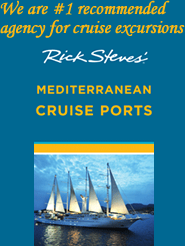




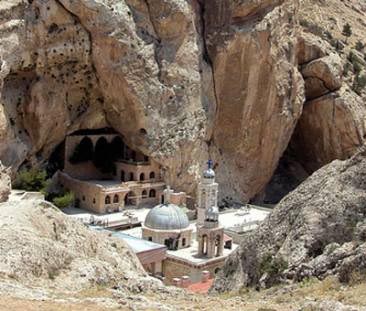
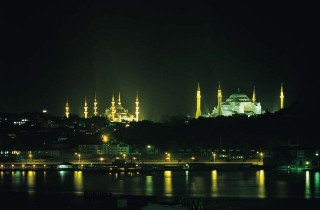 Transfer to the Hotel Ayasofaya.. If you arrive a day or two before the tour starts, you will still be given transfer included in the price
Transfer to the Hotel Ayasofaya.. If you arrive a day or two before the tour starts, you will still be given transfer included in the price 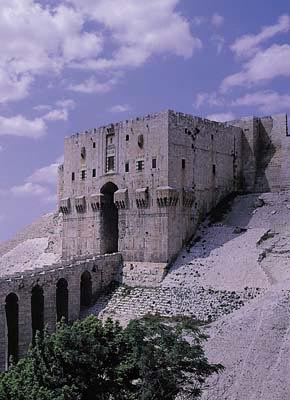
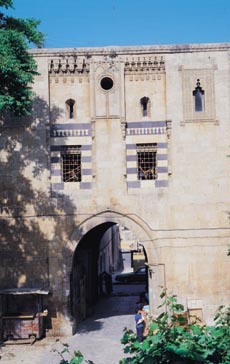
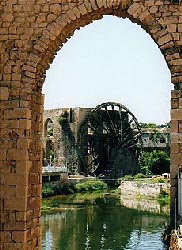 SYRIA Day 4 April 15 , 2011 Friday Humus ( Homs) Hama Water Mills Ebla Tablets from Assyrian Era Apamia Roman city
SYRIA Day 4 April 15 , 2011 Friday Humus ( Homs) Hama Water Mills Ebla Tablets from Assyrian Era Apamia Roman city 



